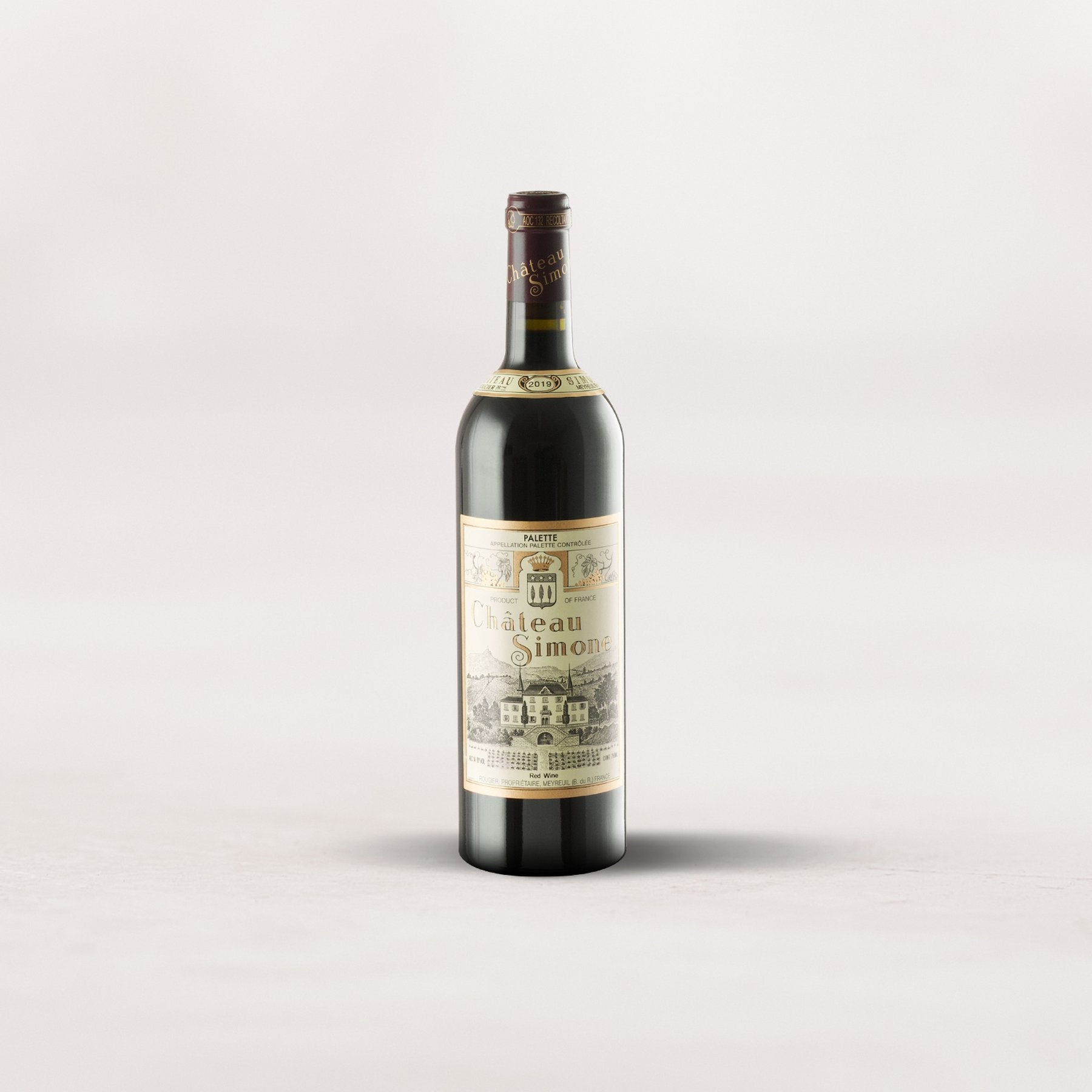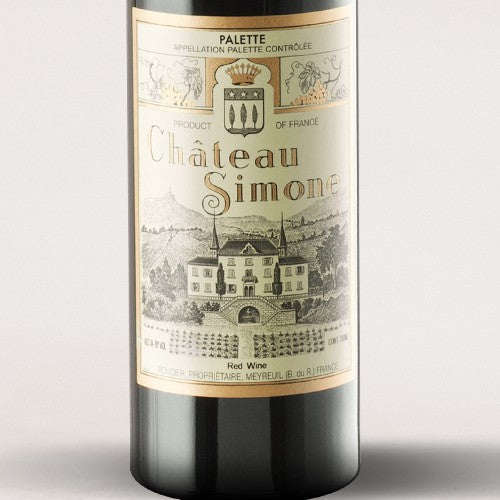Château Simone’s ability to be among the most iconic yet vastly underrated and arcane producers on earth is a magic act that will never cease to amaze me. Their small-production Palette Rouge is, has been, and will continue to be one of the most enchanting experiences in the world of wine. The SommSelect contingent has rapidly inhaled every vintage we’ve offered. Beyond our savvy bubble, Simone is quietly referred to as a Grand Cru château, and some insiders have even gone so far as to coin them as the “Pétrus of Provence.” So, I often assume Château Simone is being discussed in every wine bar around the world. Wrong.
These wines are just too limited and mysterious for the masses, and the handful of outlets that have access to them swiftly hoard every bottle allowed, and then patiently wait for the next allocation. What’s the reasoning behind all this? Family-run for nearly two centuries, Château Simone crafts its supernatural Palette Rouge by way of ancient vines (some of which have been rooted since the 1800s), sorcerous blending skills, and a barrel-aging regimen in a hand-dug cellar from the 16th century. In the spectacular 2019 vintage, all this results in a truly unique masterpiece that captures the most alluring qualities of elite Bordeaux, Rhône, and Piedmont. It is a region-defining red that’s incomparable in taste—with a cellar life that’ll go up against any!
To enjoy Simone’s Palette Rouge is to have enjoyed one of the finest, most unique experiences wine can offer. These wines are region-defining, incomparable in taste, and their cellar life is nearly inexhaustible. Owned by the Rougier family since 1830, the property clings to a single hillside in Montaiguet, a small hamlet just east of Aix-en-Provence, 20 miles north of Marseille. The appellation that encompasses this village is Palette AOC, and even as a small independent producer, Château Simone produces a majority of the wine labeled within the designation. To the naked eye, Château Simone appears to be a classic family-run estate, but it’s impossible to begin discussing the property without immediately diving into the myriad qualities that make this one of the most distinctive estates in France.
The first and perhaps most shocking feature about the Rougier family’s vines is that they are north—yes, north—facing. Simone’s vines hug a 750-foot limestone face that is angled directly away from the sun. This is unusual, but it allows the grapes to retain their freshness, despite the region’s fierce heat. It is one of the few north-facing vineyards I’ve ever seen that produces world-class wine. Next, there is a shocking diversity of grape varieties present in these ancient vines. Château Simone sits directly between Châteauneuf-du-Pape and Bandol, so it’s unsurprising to see standards like Grenache, Mourvèdre, Cinsault, Syrah, and Carignan—but if you look a little closer, you will discover Cabernet Sauvignon, Manosquin, Castet, Muscat Noir, Théoulier, Tibouren, Picpoul Noir, Muscat de Hambourg, and many others. Finally, the character of Château Simone’s wines is perhaps what is most unique for sommeliers and collectors. Despite Provence’s long and sometimes punishingly hot growing season, Château Simone does not produce heavy or overpowering wines. On the contrary, the Rougier family is renowned for bottling beautifully elegant, floral, aromatic reds that caress and finesse the palate rather than hammer it with alcohol and extract. This is a Provençal Grand Cru, plain and simple.
Château Simone’s assorted grapes in 2019 were harvested by hand, de-stemmed, and lightly pressed before a natural fermentation in stainless steel tanks. The resulting wine was racked into small oak casks. After eight months, the wine was decanted once more into larger barrels of various ages, where it then rested for an additional year before blending and bottling without filtration. The freshly bottled wine matured for another year before leaving their cellar. All told, the entire process took nearly four years before entering our market! In our experience with Château Simone, the wines often require even more time in bottle before fully exhibiting the singular qualities that made them iconic. That is certainly the case for the 2019 release. This is massive, powerful, and brawny—a Mediterranean red of Herculean strength. If drinking now, decant for several hours and drink over 2-3 days, but waiting until 2024 or 2025 before pulling that first cork will provide the best results!











